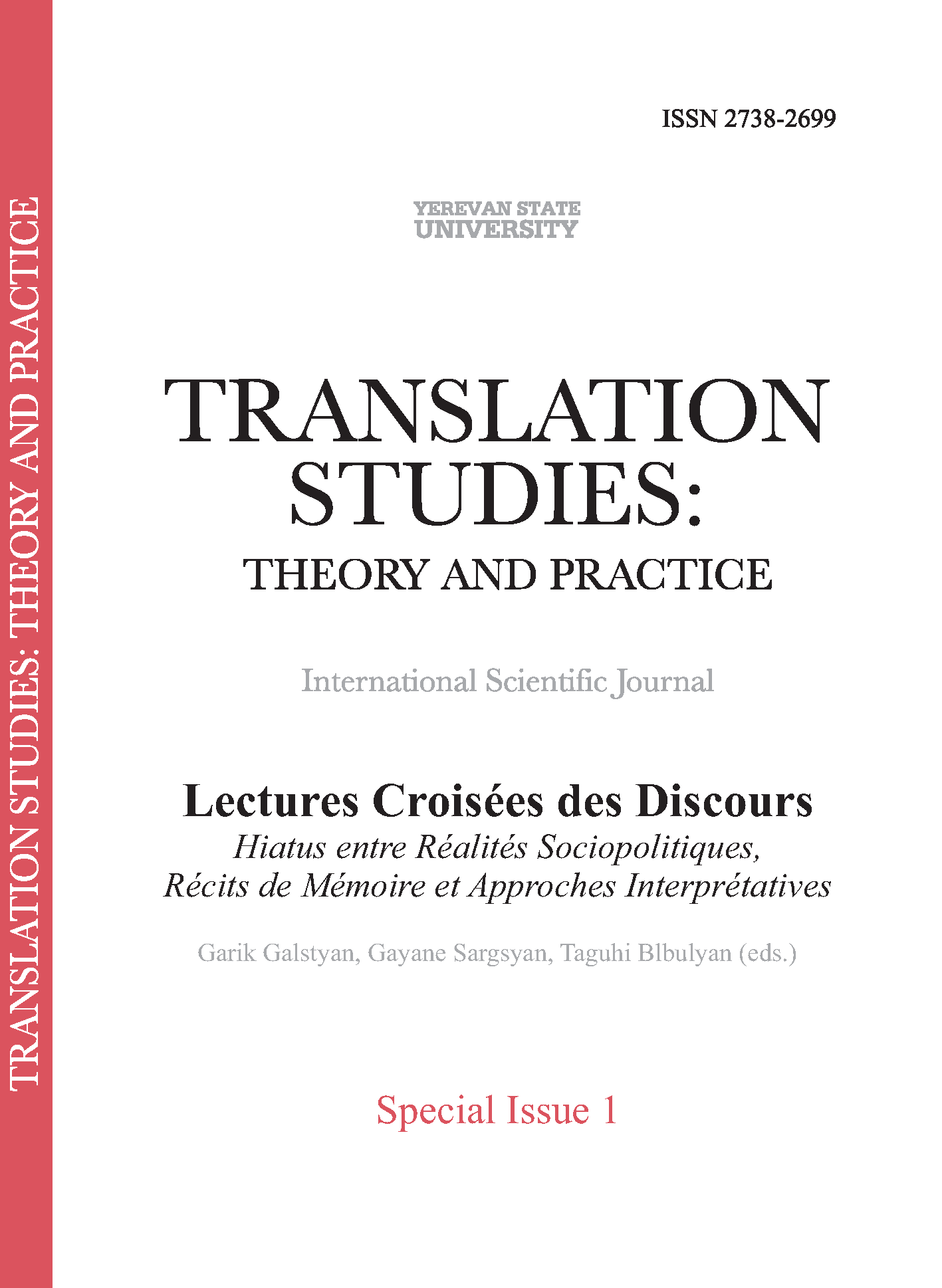Polyphony of the Modal Subject in Mythopoetic Discourse
DOI:
https://doi.org/10.46991/TSTP/2023.SI.1.217Keywords:
mythopoetic discourse, paratopic space, modalization, enunciation, lyrical subjectAbstract
The modalization of the mythopoetic enunciation transforms the lyrical subject into a modal subject, which finds its place in the paratopic space expressed through the aquatic element, which plays a role in the progressive erasure of the poetic self, attested from the Baroque period, and led to its absolute elocutory disappearance in surrealist poetry. This dynamic of the metamorphoses of the modal subject in mythopoetic texts is analysed on the example of the poems of Saint-Aimant, Tristan l’Hermite and André Breton.
References
Bally, Charles, Linguistique générale et linguistique française, Francke, Berne, 1965.
Bachelard, Gaston, L’eau et les rêves, José Corti, Paris, 1942.
Maingueneau, Dominique, Eléments de linguistique pour le texte littéraire, Dunod, Paris, 1993.
Maingueneau, Dominique, Le discours littéraire. Paratopie et scène d’énonciation, Armand Colin, Paris, 2004.
Mallarmé, Stéphane, Crise de vers. URL : http://lyriktheorie.uniwuppertal.de/texte/-1897_mal¬larme2.html (consulté le 10 août 2022).
Downloads
Published
How to Cite
Issue
Section
License
Copyright (c) 2023 Naira Manukyan

This work is licensed under a Creative Commons Attribution-NonCommercial 4.0 International License.










